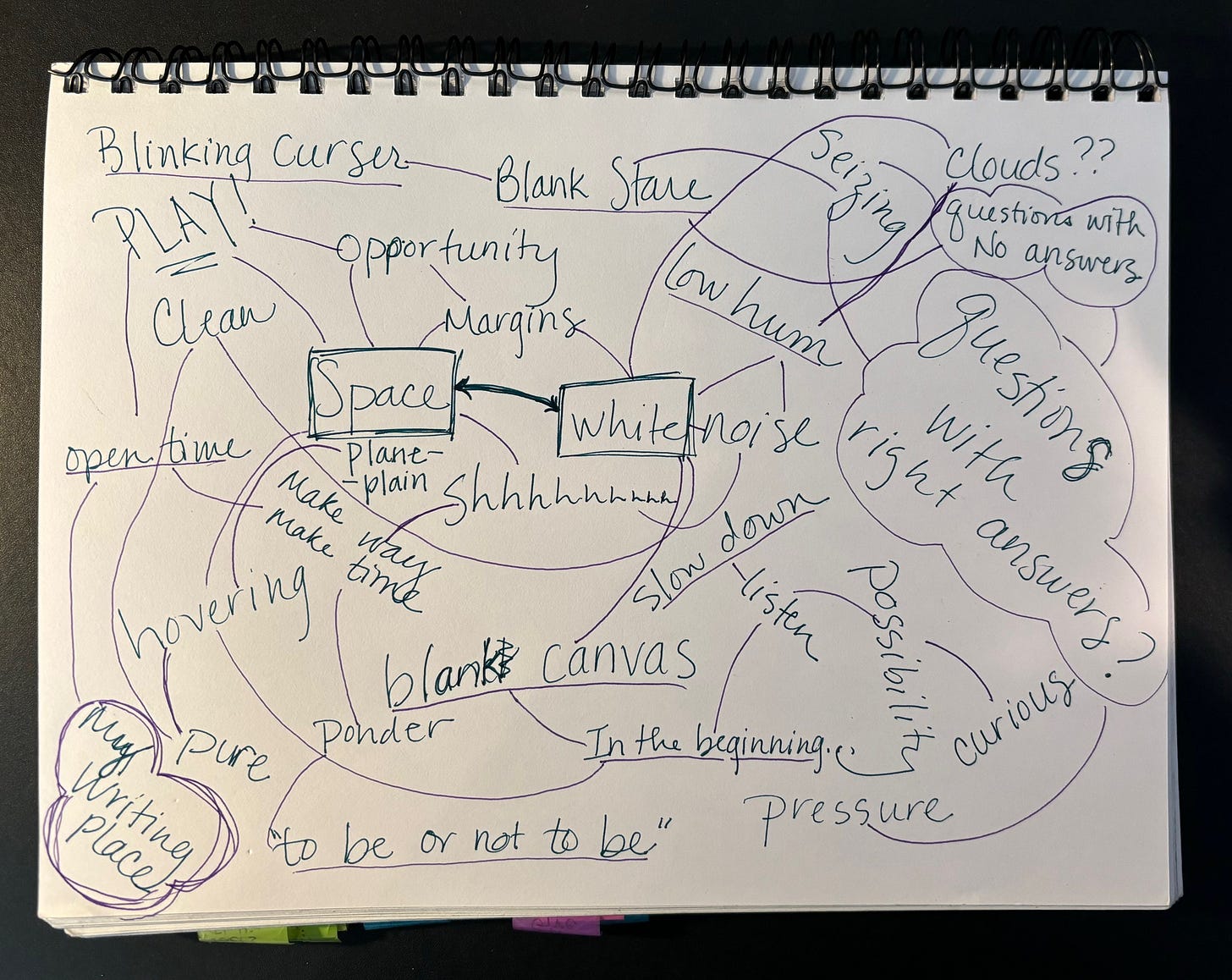Greetings, R&W listeners and readers!
So, here we are, about two-thirds of the way through North Woods, by Daniel Mason. If you’ve been reading and listening along with us, I hope you’re loving this story as much as Rhea and I loved reading and recording the episodes for it (At the time of this writing, we’ve recorded all of North Woods, and now reading and preparing for Cloud Cuckoo Land, by Anthony Doerr; another beautiful and profound story).
One of the unique features of North Woods that I’m sure you’ve noticed, and that I mentioned in the North Woods Part One podcast episode, is all the whitespace found in the pages of the story. Maybe it wouldn’t be so noticeable if the images (also unique) weren’t sometimes set strange on the page—up in a corner or off-centered in the middle. Or, if there weren’t those strange “blank” pages save the long, rambling footnote filling the bottom third of pages 103-105, all in service to the one line proverb:
WHEN the sheep are gone, comes the quiet of the pasture.
—From “Provers and Sayings,” North Woods
Notice, I say “blank,” even though the pages aren’t blank; they contain the footnote. But footnotes are, well, footnotes. Not story. At least, this is how we tend to think of footnotes when reading anything non-fiction. They are an add-on of sorts; helpful information that gives context but not essential. (This is false, and also a topic for another day, if ever.)
Of course, we would be wrong to treat that long footnote of North Woods as an add-on. We would also be wrong to treat the whitespace we see throughout the story as an “add-on,” or an aesthetic for it’s own sake.
So then, if the whitespace isn’t there only as an aesthetic, what is it there for?
That’s a great question. Also, I don’t know. At least I don’t know with any definativeness. Which is fantastic! This means we have an opportunity to wonder.
One of my favorite ways to wonder about a thing is to begin by making a word map of it. Surely you remember word maps—also called word (or idea) webs? It’s when you write the word or concept you are studying in the center of a blank piece of paper, and put a box or circle around it. Then, depending on the topic and your goals, you write all around it: either things you need to learn, or avenues of research, or ideas it conjures, etc. You draw lines connecting the main topic word to all the idea words, and all the idea words that are interconnected. The options are endless with word mapping. And, not limited middle school writing projects.
Here is where I commend making a word map of whitespace to you. Pull out a sheet of clean paper (lined or unlined, doesn’t matter). Write the word, whitespace, in the center of the page. If you want, put a circle or box around it to make it more visible. Then, without much, if any, pondering beforehand start writing all the words that come to mind when you think of whitespace. Try not to labor over your ideas or be overly deliberate. This is one of those exercises in spontaneity… flow… think-it-write-it.
Look, I understand. Easier said than done. If it helps, pretend you’re writing a social media rant in which you’re telling off __________ over ___________, knowing you will (hopefully) hit Delete rather than Post in the end.
Except, you’re writing about whitespace. Try not to confuse the two. Especially if you plan on sharing your word map here.
At the bottom of this post is my word map on whitespace. I strongly suggest you not look at it until after you’ve done your own. If you’re desperate for a visual, give it a quick glance, but then look away (!) lest your ideas become tainted by my ideas.
Here are some questions to help stir your imagination as you word map about white space:
What happens inside you when you encounter whitespace—what thoughts or emotions come up?
What images does whitespace conjur in your mind?
What other words or ideas do you think of when you think of whitespace?
What are all the ways one can experience whitespace?
What happens to your senses when you think of whitespace?
What does whitespace mean to you?
You don’t need to have thoughts for all these questions, or any of them if it’s not helpful. If it seemed like some of the questions hav overlapping meanings, it’s because they do. Sometimes we need to ask the same question from multiple angles to unlock our best answers.
I would love to hear your thoughts on white space: what ideas, emotions, and images whitespace provokes in you; and what work you think the whitespace in North Woods is doing. I’d especially love to see your own whitespace word map. Add it to the comments below.
And remember, don’t study my word map until after you do yours!
Have fun mapping! :)
(Don’t ask why I wrote whitespace as space— white. I have no idea. Something else to wonder about, I guess.)






Loved this activity! I also wrote whitespace as two words. 😂